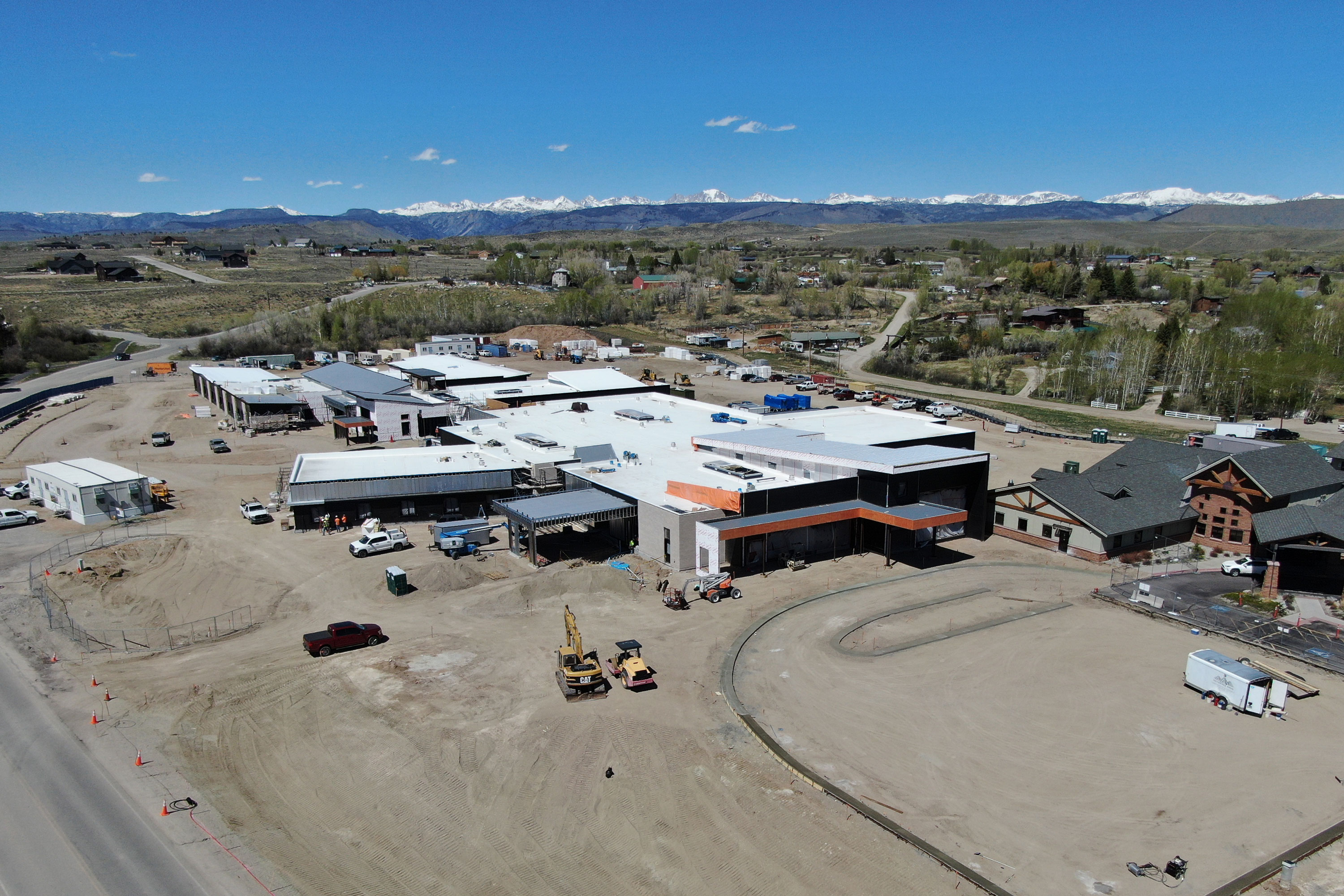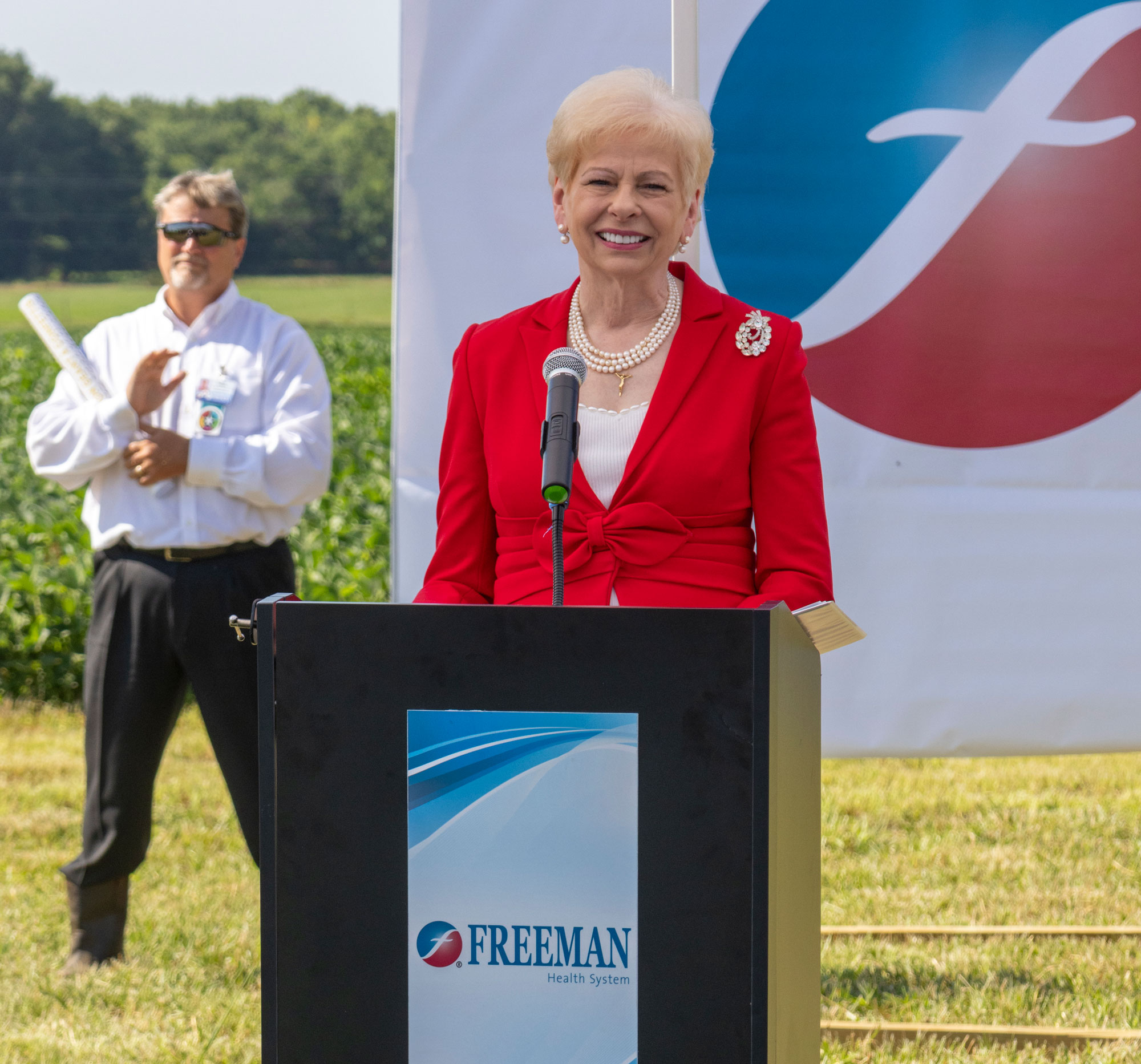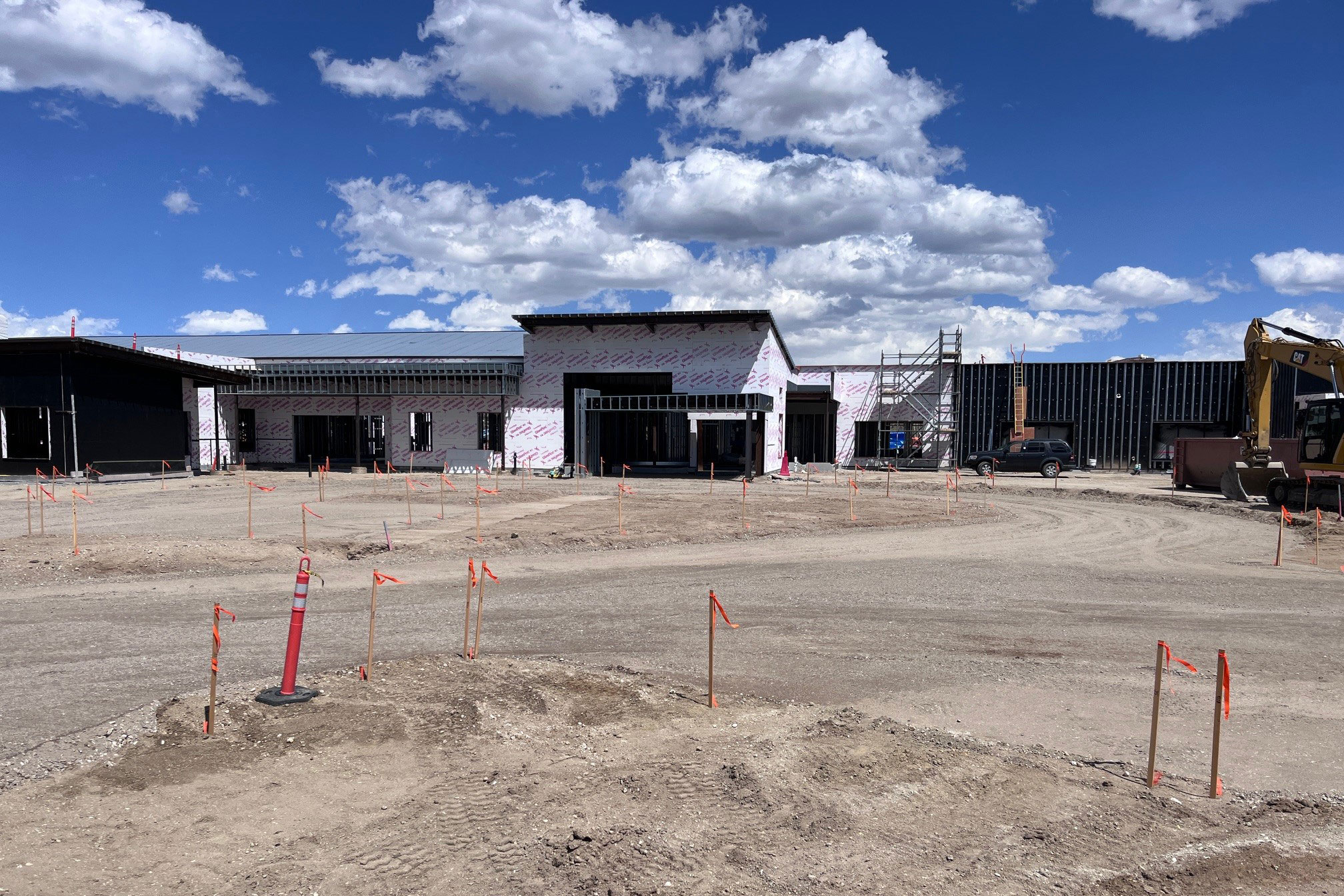There’s a brand new morning ritual in Pinedale, Wyoming, a city of about 2,000 nestled towards the Wind River Mountains.
Associates and neighbors within the oil- and gas-rich group “take their morning coffee and pull up” to observe staff constructing the county’s first hospital, mentioned Kari DeWitt, the challenge’s public relations director.
“I think it’s just gratitude,” DeWitt mentioned.
Sublette County is the one one in Wyoming — the place counties span hundreds of sq. miles — with out a hospital. The ten-bed, 40,000-square-foot hospital, with a equally sized hooked up long-term care facility, is slated to open by the summer time of 2025.
DeWitt, who is also government director of the Sublette County Well being Basis, has an workplace on the city’s well being clinic with a window view of the development.
Pinedale’s residents have good cause to be excited. New full-service hospitals with inpatient beds are uncommon in rural America, the place declining inhabitants has spurred many years of downsizing and closures. But, a number of communities in Wyoming and others in Kansas and Georgia are defying the development.
“To be honest with you, it even seems strange to me,” mentioned Wyoming Hospital Affiliation President Eric Boley. Small rural “hospitals are really struggling all across the country,” he mentioned.

There isn’t a official tally of latest hospitals being in-built rural America, however business consultants similar to Boley mentioned they’re uncommon. Usually, health-related development initiatives in rural areas are for smaller pressing care facilities or stand-alone emergency services or are replacements for previous hospitals.
About half of rural hospitals misplaced cash within the prior 12 months, in line with Chartis, a well being analytics and consulting agency. And almost 150 rural hospitals have closed or transformed to smaller operations since 2010, in line with knowledge collected by the College of North Carolina’s Cecil G. Sheps Middle for Well being Providers Analysis.
To stem the tide of closures, Congress created a brand new rural emergency hospital designation that allowed struggling hospitals to shut their inpatient models and supply solely outpatient and emergency providers. Since January 2023, when this system took impact, 32 of the greater than 1,700 eligible rural hospitals — from Georgia to New Mexico — have joined this system, in line with knowledge from the Facilities for Medicare & Medicaid Providers.
Tony Breitlow is well being care studio director for EUA, which has intensive expertise working for rural well being care programs. Breitlow mentioned his nationwide structure and engineering agency’s work expands, replaces, or revamps older buildings, a lot of which have been constructed through the center of the final century.
The work, Breitlow mentioned, is a part of well being care “systems figuring out how to remain robust and viable.”
Freeman Well being System, primarily based in Joplin, Missouri, introduced plans final 12 months to construct a brand new 50-bed hospital throughout the state line in Kansas. Paula Baker, Freeman’s president and chief government, mentioned the system is constructing for sufferers within the southeastern nook of the state who journey 45 minutes or extra to its larger Joplin services for care.

Freeman’s new hospital, with development on the constructing anticipated to start within the spring, will probably be lower than 10 miles away from an older, 64-bed hospital that has existed for many years. Kansas is certainly one of greater than a dozen states with no “certificate of need” legislation that may require well being suppliers to acquire approval from the state earlier than providing new providers or constructing or increasing services.
Baker additionally mentioned Freeman plans to function emergency providers and a small 10-bed outpost in Fort Scott, Kansas, opening early subsequent 12 months in a nook of a hospital that closed in late 2018. Residents there “cried, they cheered, they hugged me,” Baker mentioned, including that the “level of appreciation and gratitude that they felt and they displayed was overwhelming to me.”
Michael Topchik, government director of the Chartis Middle for Rural Well being, mentioned regional well being care programs within the Higher Midwest have been significantly energetic in competing for sufferers by, amongst different issues, constructing new hospitals.
And whereas personal company cash can drive development, many rural hospital initiatives faucet authorities applications, particularly these supported by the U.S. Division of Agriculture, Topchik mentioned. That, he mentioned, “surprises a lot of people.”
Since 2021, the USDA’s rural Neighborhood Services Packages have awarded $2.24 billion in loans and grants to 68 rural hospitals for work that was not associated to an emergency or catastrophe, in line with knowledge analyzed by KFF Well being Information and confirmed by the company. The federal program is funded by what is usually often called the farm invoice, which faces a September congressional renewal deadline.
Practically all of the initiatives are replacements or expansions and updates of older services.
The USDA confirmed that three new or deliberate Wyoming hospitals obtained federal funding. Hospital initiatives in Riverton and Saratoga obtained loans of $37.2 million and $18.3 million, respectively. Pinedale’s hospital obtained a $29.2 million mortgage from the company.
Wyoming’s new development is uncommon in a state the place greater than 80% of rural hospitals reported losses within the third quarter of 2023, in line with Chartis. The state affiliation’s Boley mentioned he worries about a number of hospitals which have lower than 10 days’ money available “day and night.”

Pinedale’s challenge mortgage was permitted after the group submitted a feasibility research to the USDA that included native clinics and a long-term care facility. “It’s pretty remote and right up in the mountains,” Boley mentioned.
Pinedale’s DeWitt mentioned the group was lacking key providers, similar to blood transfusions, which are sometimes vital when there’s a trauma like a automobile crash or if a pregnant girl faces extreme problems. Native ambulances drove 94,000 miles final 12 months, she mentioned.
DeWitt started working to lift assist for the brand new hospital after her personal pregnancy-related trauma in 2014. She was bleeding closely and arrived on the native well being clinic believing it operated like a hospital.
“It was shocking to hear, ‘No, we’re not a hospital. We can’t do blood transfusions. We’re just going to have to pray you live for the next 45 minutes,’” DeWitt mentioned.
DeWitt needed to be airlifted to Idaho, the place she delivered a couple of minutes after touchdown. When the hospital financing went on the poll in 2020, DeWitt — totally recovered, with wholesome grade-schoolers at residence — started making 5 calls an evening to rally assist for a county tax enhance to assist fund the hospital.
“By improving health care, I think we improve everybody’s chances of survival. You know, it’s pretty basic,” DeWitt mentioned.




